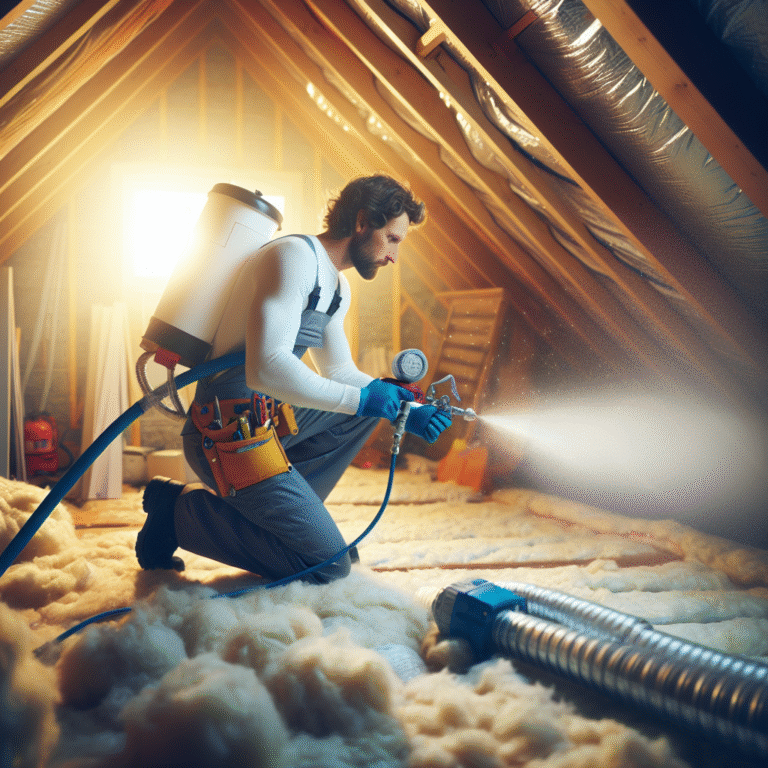Slash Your Energy Bills: The Shocking Truth About Average Cost Per Square Foot for Blown In Insulation
Introduction
Every winter, homeowners shiver as heating bills spike—and every summer, air conditioning costs soar. The secret weapon against these fluctuations? Blown-in insulation. Not only does this method seal every nook and cranny in your attic, it also pays for itself over time in energy savings. But what is the average cost per square foot for blown in insulation? In this article, we’ll uncover the true price breakdown, explore its benefits, and help you decide whether DIY or professional installation makes sense for your loft.
Benefits of Blown-In Insulation for Your Loft
• Seamless Coverage: Blown‐in insulation—made from fiberglass, cellulose, or mineral wool—conforms to any shape. It fills gaps around pipes, wires, and joists far better than batt or roll products.
• High R‐Value: You’ll get more thermal resistance per inch. A typical installation delivers R‐38 to R‐60 ratings, keeping heat in during winter and out during summer.
• Eco‐Friendly Options: Cellulose insulation often contains up to 85% recycled paper treated with non‐toxic fire retardants. Choosing recycled materials reduces landfill waste and carbon footprint.
• Soundproofing: That dense layer also dampens noise from outdoors or between floors, creating a quieter, more comfortable home.
• Long‐Term Savings: By minimizing air leaks and thermal bridging, blown‐in insulation can cut heating and cooling costs by up to 20%. Many homeowners recoup their investment within three to five years.
H2: Factors Affecting the Average Cost Per Square Foot for Blown-In Insulation
Understanding the average cost per square foot for blown in insulation requires breaking down these variables:
• Insulation Material
– Fiberglass: $0.75–$1.50 per sq. ft. Its durability and mold resistance make it a budget-friendly favorite.
– Cellulose: $1.00–$2.00 per sq. ft. Made from recycled fibers, it offers excellent coverage and an eco-conscious choice.
– Mineral Wool: $1.25–$2.50 per sq. ft. Superior fire resistance and sound dampening come at a premium price.
• Desired R‐Value
Thicker layers cost more. For climates requiring R‐49 or higher, you’ll pay extra per square foot to achieve maximum efficiency.
• Loft Size and Shape
Attics with steep slopes or obstructions take longer to insulate, increasing labor time and equipment fees. A perfectly square attic is fastest and cheapest to cover.
• Existing Insulation Condition
Removing old or damaged insulation adds $0.20–$0.50 per sq. ft. Proper disposal and prep work are essential for optimal performance.
• Accessibility & Equipment
If technicians must navigate tight crawl spaces or rent scaffolding, these logistical challenges can add 10–15% to the total cost.
• Regional Labor Rates
Coastal and urban areas often command higher installation fees than rural regions. Always get multiple estimates to compare local pricing.
• Seasonal Demand
Off‐peak periods (spring and fall) sometimes offer discounts of up to 10% as contractors balance their schedules.
DIY vs Professional Installation: Which is More Cost-Effective?
DIY enthusiasts may be tempted to rent a blowing machine and tackle loft insulation themselves. Material costs alone can be as low as $0.50 per sq. ft., and rental fees often run $50–$100 per day. Yet beware:
• Equipment Mastery
Improper machine settings can lead to uneven coverage or over‐compression, reducing R‐value.
• Safety Concerns
Working in tight, dusty attics without proper protective gear can cause respiratory and skin irritation.
• Time Investment
A weekend project can stretch into multiple weekends if you’re new to insulation, cutting into your free time.
Hiring a professional typically costs $1.25–$3.00 per sq. ft. but includes:
• Certified installers with years of experience
• All necessary equipment and safety gear
• Quality materials sourced at contractor discounts
• Clean‐up and post‐installation inspection
For most homeowners, the peace of mind and guaranteed performance outweigh the marginal DIY savings.
H2: Frequently Asked Questions
Q1: How long does blown-in insulation last?
A: Properly installed, it can last 20–30 years. Cellulose may settle slightly over time, so periodic top‐ups every 10–15 years keep R‐value optimal.
Q2: Can blown-in insulation cause moisture problems?
A: When paired with adequate ventilation and proper moisture barriers, blown-in materials resist mold and rot. Always address attic leaks before insulating.
Q3: Will blown-in insulation settle and lose effectiveness?
A: Cellulose settles about 10–15% initially. Professionals account for this by installing extra material to meet your desired R‐value.
Conclusion
Investing in blown-in insulation is one of the most effective ways to slash your energy bills. By understanding the average cost per square foot for blown in insulation, you can budget wisely and choose the right material and installation approach. Whether you opt for DIY or hire professionals, the long-term savings in comfort and energy costs make blown-in loft insulation a smart, cost-effective upgrade for any homeowner.




